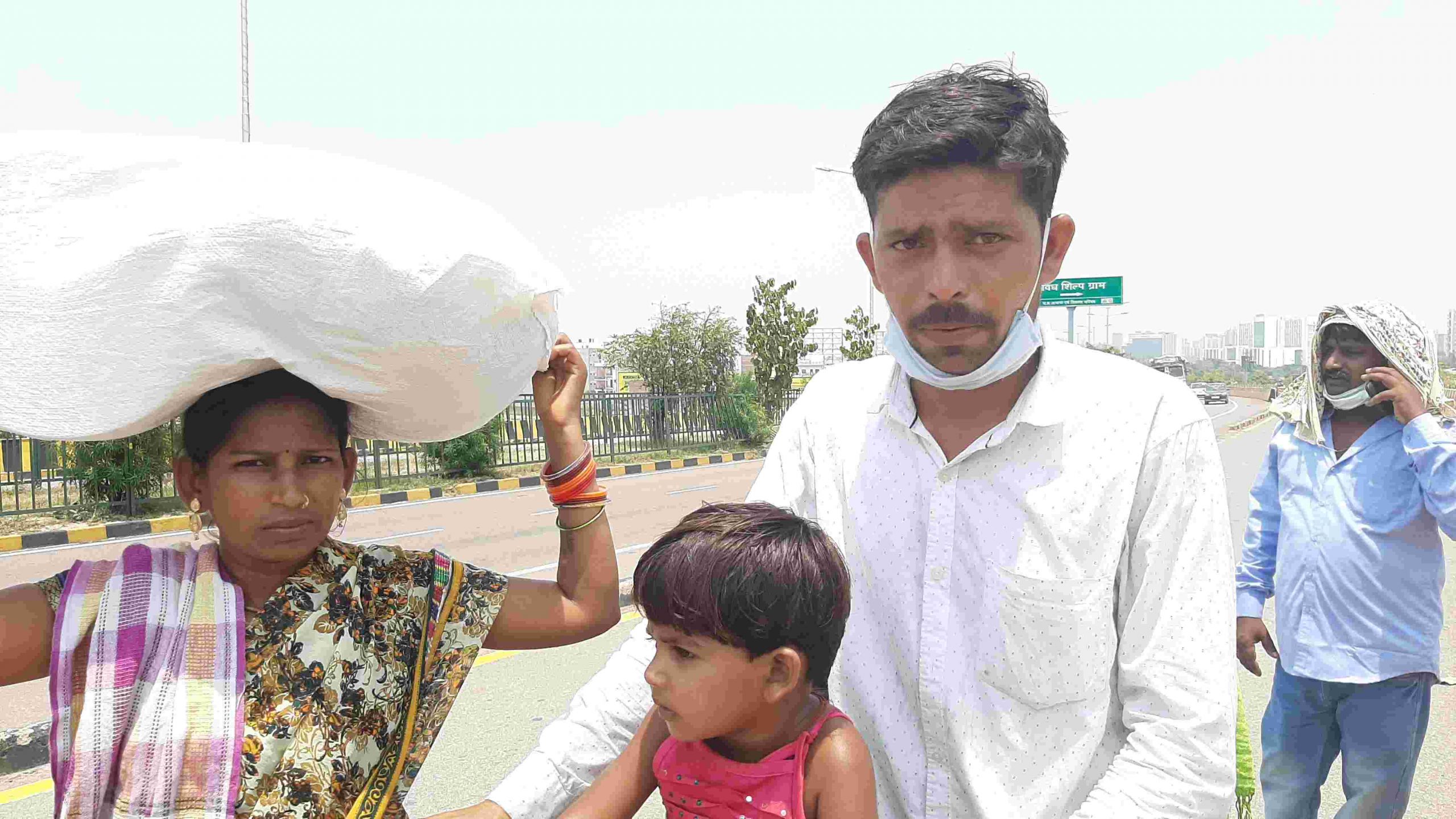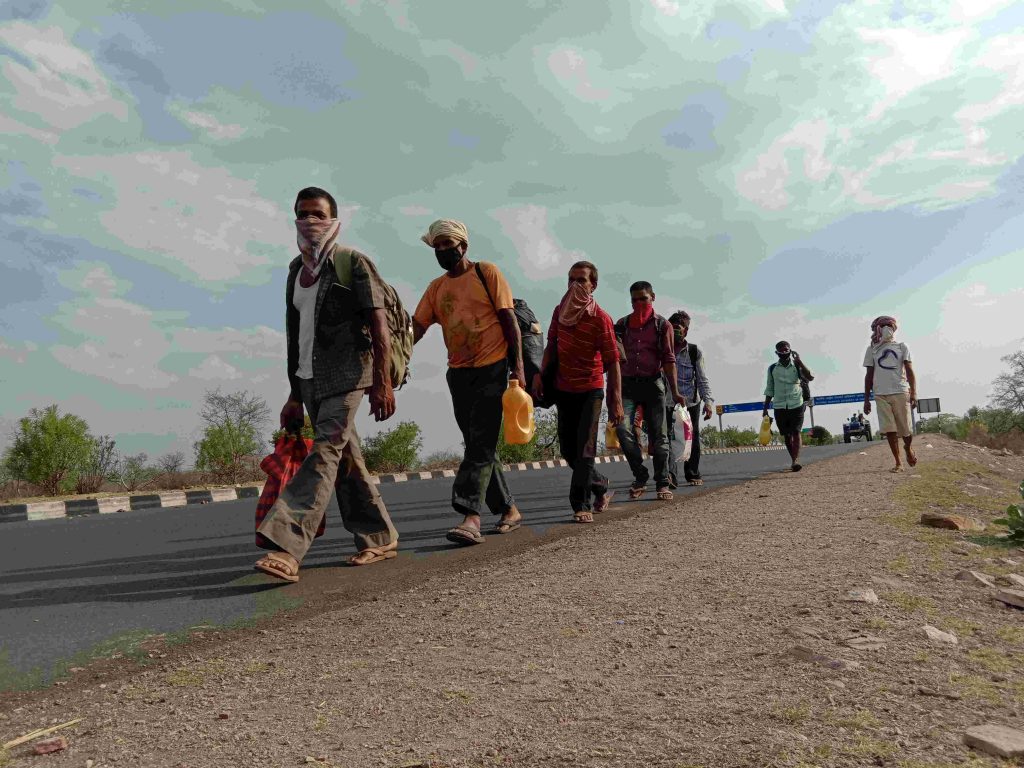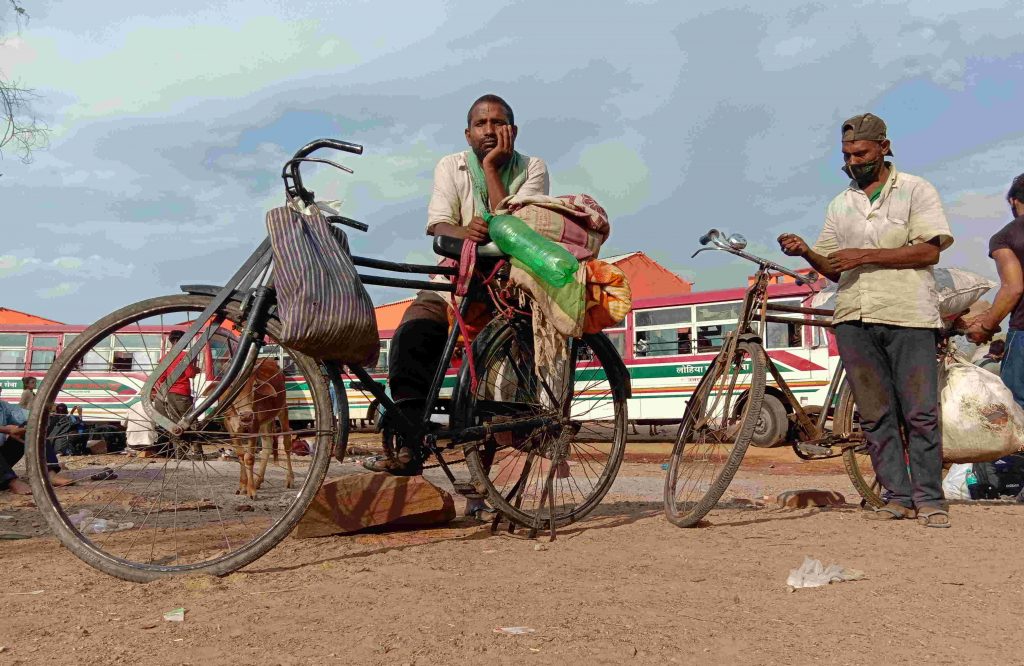Migrant Workers: The Indian government does not know their numbers, dead or alive
India has a large workforce of internal migrant workers that shape our economy. But, there is no concrete data on their numbers. The estimates range from 70 million to 194 million migrant workers. Predictably, policies for this ‘invisible population’ are missing.


Estimates of migrant workers population in India range from range from 70 million to 194 million.
On the opening day of the Parliament’s monsoon session on September 14, Santosh Kumar Gangwar, minister of state for labour and employment, responded to a question posed by three members of parliament on migrant workers returning to their hometown during the COVID-19 lockdown. In a written reply, the minister informed that the government has no data on the number of migrant workers who lost their lives during their return to their hometowns, and so there was “no question of” compensation. The government, however, said more than 10 million (10,466,152, to be exact) such workers had returned to their hometown in the lockdown.
This admission by the government of no data on migrant workers deaths has led to an uproar. But, look slightly deeper and realise that there is no credible data on the total number of migrant workers in the country. Estimates by government agencies and academic researchers range from 70 million to 194 million, a difference of over 124 million migrant workers.
Minister Gangwar and the Indian government may not have collated information on the deaths of migrant workers travelling back to their homes in the lockdown, several of them on foot. Children such as three-year-old Chandni and her one-year-old brother Nikhil lost their parents, Krishna Sahu (45) and Pramila Sahu (38) in a road accident in May while this migrant worker couple was cycling back home from Sikandara in Lucknow, Uttar Pradesh, to Bemetara in Chhattisgarh, over 750 kilometres (km) away.
There are many like the Sahus, who died during their effort to reach their families while the country was under a nationwide lockdown.

An unofficial documentation registered 971 non-COVID related deaths between March 14 and July 4 this year. Of these, at least 209 were accidents/deaths due to walking or migration. Another 47 due to exhaustion and 96 deaths in the Shramik trains that the government pressed into service to help migrant workers reach home. Another 216 died due to starvation or financial distress.
India witnessed massive distress migration during the initial weeks of the lockdown, when migrant labourers eyeing an uncertain future set out on foot from cities and hit the highways. The photographs and videos of entire families walking — exhausted children sleeping on rundown strolleys as their parents walked, a father realising that despite the long walk, he would not be able to see his dead infant — suddenly saw migrant workers, who till now were an ‘invisible’ population, turn into a ‘visible’ population.
In a first-of-its-kind national survey to document the impact of COVID-19 lockdown on rural India, Gaon Connection interviewed 25,371 rural residents, including migrant workers, across 23 states, and released the survey findings in August. The survey found at least 23 per cent migrant workers returned home walking during the lockdown, 18 per cent by bus, and 12 per cent by train. While on their way home from the cities, 12 per cent migrant workers were reportedly beaten by the police.
About 40 per cent of this workforce faced food scarcity during its journey back home. Also, while stranded in cities, migrant workers and their families had to skip meals due to lack of money. For instance, the Gaon Connection survey found 36 per cent of migrant worker respondents skipped an entire day’s meal when stranded. Over 40 per cent reportedly had to skip one meal a day, as they did not have money to arrange for food.
The Gaon Connection Survey also found that a major reason for rural people to migrate to cities is employment. For instance, three-fifth of the respondents said the reason for villagers to migrate to cities was lack of job opportunities in villages.

Migrant workers: The ‘invisible’ population
But, why is it that despite millions of migrant workers criss-crossing the entire length and breadth of the country almost all through the year, there is no credible data on their exact numbers? The answer lies in the definition, or lack of it, of ‘migrant worker’ in the country.
“The Census identifies people as ‘migrants’ if they are enumerated in a place other than their Place of Birth, or have changed their Usual Place of Residence. To qualify as a migrant for enumeration, a person should have ordinarily been living in the place of enumeration for six months or more”, reads a recent working paper, Understanding Circular Migration in India: Its Nature and Dimensions, the Crisis under Lockdown and the Response of the State, published by the Institute of Human Development. But, that is rarely the case, as a large chunk of migrant workers keeps moving in under six months.
Take the case of Ghanshyam, who belongs to Tikamgarh district in Madhya Pradesh. He owns a patch of agricultural land in his village but due to inadequate returns in farming, he is mostly on the move for employment in different cities. “Depending upon availability of work, I keep shifting between cities every two to four months. I don’t have a permanent place of residence and move back to my village when there is no work in the city,” Ghanshyam told Gaon Connection.
In March, when the nationwide lockdown was announced, he was in Bahadurgarh in Haryana. He reached his village through a mix of walking, taking a bus and getting a lift in trucks. While government officials provided food on the go, he spent an extra Rs 900 during the journey.
“The Census differentiates between interstate and intrastate migrants and also states various reasons for migration such as employment, education and marriage,” Amitabh Kundu, chairperson of the technical advisory committee on housing start up index at the Reserve Bank Of India (RBI), told Gaon Connection. “It, however, does not specify if the causal linkage is a push factor, such as poverty, unemployment, exhaustion of natural resources and natural calamities, or a pull factor that includes better standard of living, better opportunities, higher salary,” he elaborated.

As per a recent research article by Ravi Srivastava, director, Centre for Employment Studies, Institute for Human Development, published in The Indian Journal of Labour Economics: “The Census and the NSS [National Sample Survey] are likely to provide an accurate enumeration of stable populations, missing out on those who live on the fringes or those who migrate temporarily. As pointed out earlier, migration is not a one-way street. People who migrate to other destinations may do so for a period of time, after which they may return to their areas of origin.”
Thus, the very definition of a ‘migrant worker’ misses out on a large chunk of the migrant workforce in the country. Both government agencies and academic researchers have tried to put together data on this workforce, but there are wide differences in these estimates.
70 million, 100 million, or 194 million?
Far away in Dumka, Jharkhand, in December 2019, Amjed Ansari of Dudhani village, left on his fourth journey to Leh, 2,500 km and a completely different topography away, where he worked as a road construction labourer with the Border Roads Organisation. During the COVID-19 lockdown, Ansari and fellow workers were stranded in Leh and airlifted by the Jharkhand government.
Would migrant workers like Ansari, who migrate to work for a couple of months in a year, make it to the official record books of migrant workers population in the country, is not clear.
As per the Census 2011, which is already a decade old, there were 450 million internal migrants in India, of whom 194 million were migrant workers, both urban and rural combined. “Most migrants in India do not give employment as a reason for migration, but rather marriages and other associational reasons (moving with families). An analysis of all the migrants in India shows that they fall into different streams and segments. Most migrants move short distances, within the same district, followed by movement to other districts within the state,” reads the recent research article by Srivastava.

There are other estimates of migrant workers population in the country as well. For instance, a 2013 research paper has estimated it to be nearly 70 million (based on the National Sample Surveys), whereas an older research paper of 2009 puts the figure of migrant workers at over 100 million, with men usually comprising over 80 per cent of the estimated figure.
Meanwhile, as per a research and its estimates from National Sample Survey (NSS) 2007-08 and Census data, inter-state seasonal/circular migration is dominated by lower income states — Bihar and Uttar Pradesh, followed by Madhya Pradesh, West Bengal, Rajasthan, Chhattisgarh, Jharkhand and Odisha.
Long-term out-migration is also primarily from low income states, with Uttar Pradesh and Bihar having the highest share (25 per cent combined for interstate migrant workers), followed by Rajasthan and Madhya Pradesh at five per cent each.

“There are a wide range of migrants — some may be daily wagers, some change their occupations seasonally and many operate in the economy of the poor. There are also migrants with very specialised skills,” Shweta Damle, founder of Mumbai-based Habitat and Livelihood Welfare Association told Gaon Connection.
“The Census provides a satisfactory measure of permanent migration, and imperfectly measures long-term semi-permanent circular migration but it is not designed to measure short-term circular migration,” noted a research article by Srivastava. The NSS Employment-Unemployment and Migration Surveys in 1999-00 and 2007-08 attempted to estimate persons migrating out for short-durations for employment. But these efforts did not capture the magnitude of short-term seasonal or circular migrants, it said.
Even within the migrant workers population, very little is known about intra-state migrant workers, as much focus has remained on inter-state workers who travel between states. Some reports suggest that perhaps 70-80 per cent of intra-state short-term circular migrants may have walked back to their villages during the lockdown, most of them in the first week itself.
With the country on an unlock mission and several cities limping back to regular economic activities, migrant workers have started to return to cities. What has become apparent in the COVID-19 lockdown is that migrant workers hold the reins of Indian economy. However, they are bereft of basic necessities such as food security, employment security, healthcare, education for children and, above all, security of life.
“There’s no exact figure of migrant workers in the country as there’s no formalisation of migrant workers. This is a part of a bigger master plan played by free market policies that always restrict migrant workers from being formalised and do not allow them access to social security and entitlement. This has been the attitude of both the State and the market forces towards migrant workers,” Chandan Kumar, a labour rights activist told Gaon Connection. He is also the national coordinator of the Working People’s Charter, a coalition of over 150 workers collectives organising informal workers across India.
If we call migrant workers the cogs in the wheels of the Indian economy, but do not account for them, even in terms of numbers, forget specifics such as age, education and economic background, how are policies going to be planned for them?

